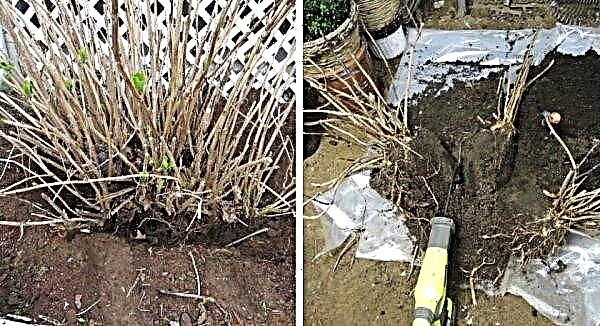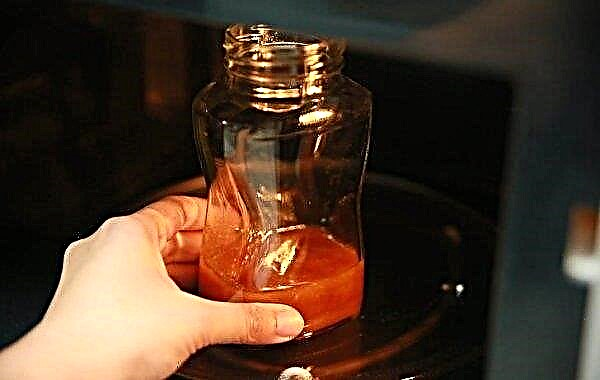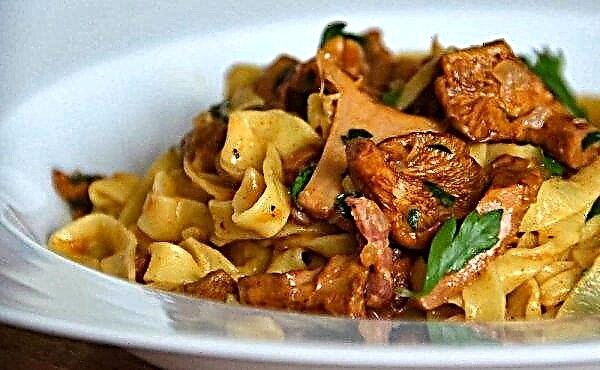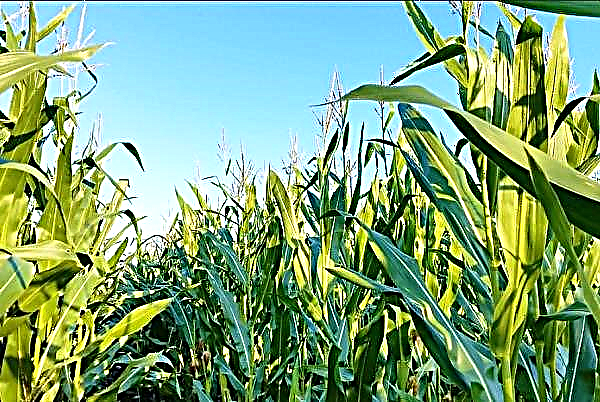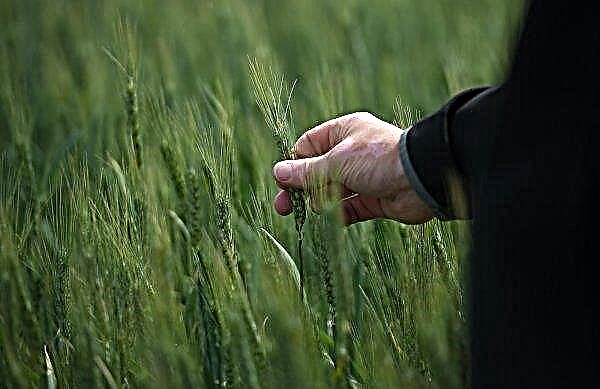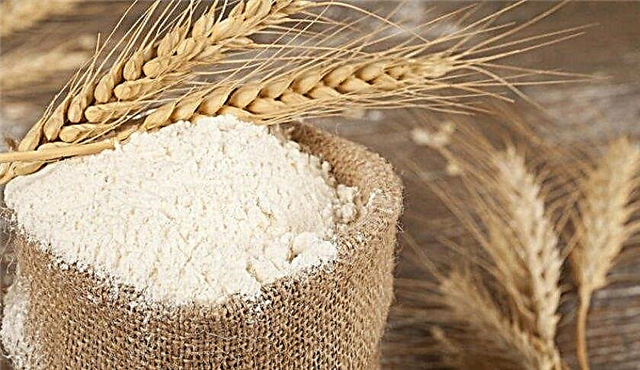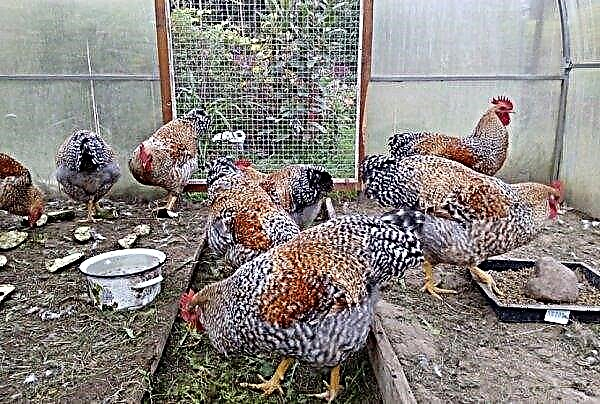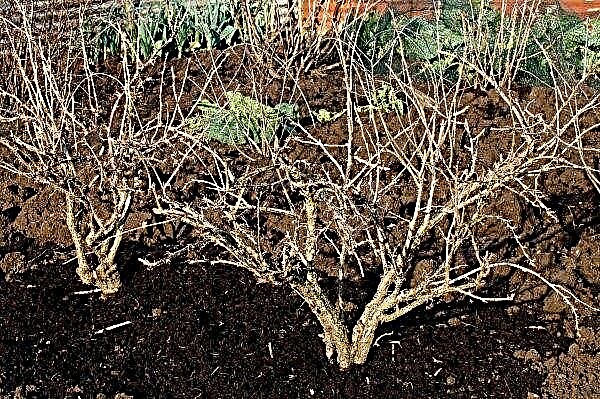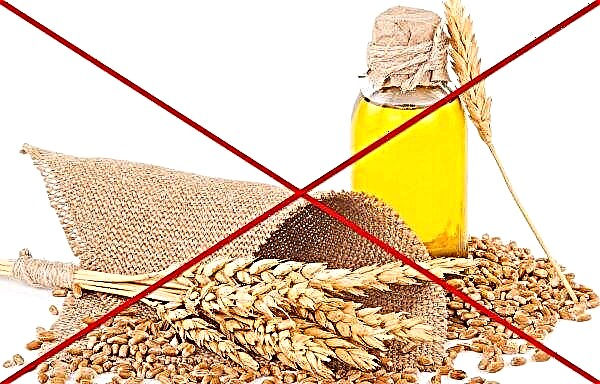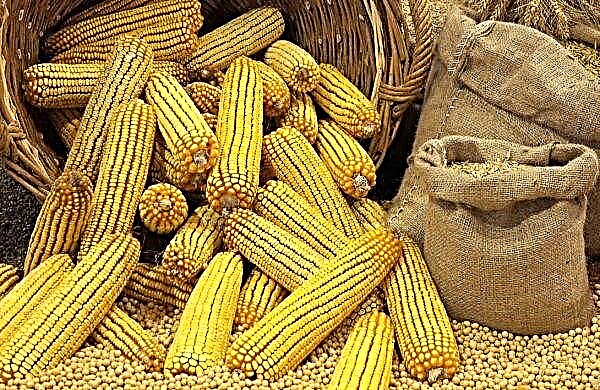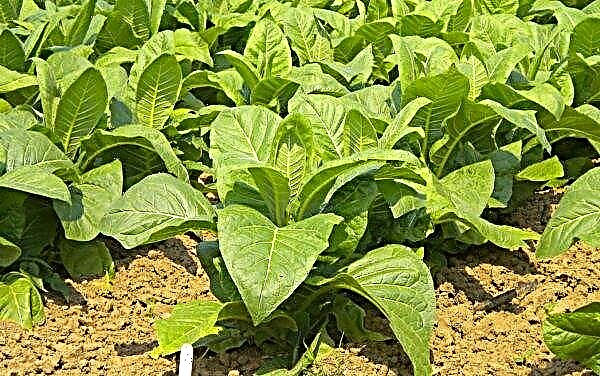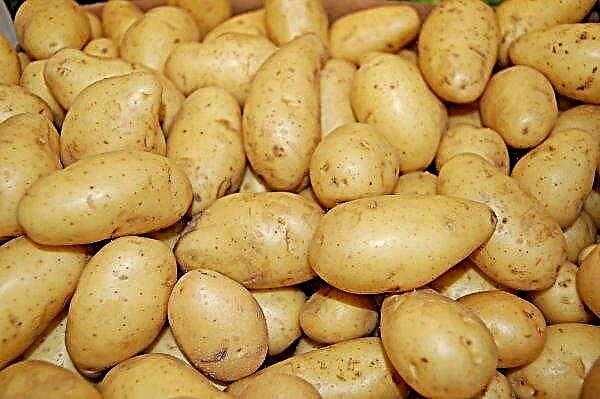At first glance at the blooming and fragrant plumeria, it seems that not everyone can grow such an exotic plant. However, owning information about her preferences, methods of cultivation and the characteristics of care, to do this is not so difficult.
Did you know? In Asia, plumeria is called a temple tree, used in funeral ceremonies and planted near temples. In India, a plant is known as the Tree of Life. And in Hawaii he is woven into traditional wreaths of lei.
Basic rules for growing plumeria
Plumeria is a tropical plant that fascinates with its beauty and unique aroma. The smell of citrus, jasmine and spices intertwined in her smell. And the flowers seem to be made of marzipan. They prefer to grow it in the open air, in greenhouses and apartment conditions. This exotic flower is not whimsical during cultivation, but it has certain preferences.
Their list includes:
- heat;
- bright lighting;
- high humidity;
- lack of drafts;
- sufficient watering;
- regular top dressing.
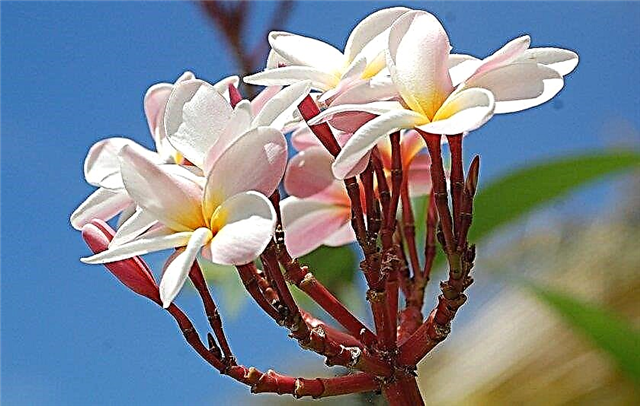
Dates and optimal planting conditions
Plume is propagated in 2 ways:
- vegetative;
- seed.
Did you know? The second name of the plumeria is frangipani. So the flower was named after the nobleman from Italy, who first used its fragrance to create perfumes.
For a tropical plant, a daily 6-7-hour stay in direct sunlight is important. Therefore, when choosing a location, preference should be given to those windows in the house that can provide this condition. It can be the south or southwest side. Northern window openings for growing plumeria will not work - in such conditions it will refuse to bloom.
Planting seeds must be planned for early spring. In the room where the seedlings and sprouts will be kept, a warm temperature should be maintained at the level of + 23 ... + 25 ° С. A strengthened plant should be provided with warmer conditions - + 25 ... + 30 ° С. With the onset of autumn, the temperature will need to be gradually reduced. In winter, during dormancy, plumeria should be grown under conditions of + 16 ... + 17 ° С.
Another important condition for planting and further cultivation is high air humidity. A pot with plumeria is kept on a pallet with wet expanded clay, pebbles or sand. Also, the optimum level of humidity is achieved by the operation of an air humidifier and frequent spraying from a spray bottle.
How to plant plumeria from seeds at home
Typically, plumeria seeds are propagated by those gardeners who are very fond of indoor plants and watch how their development occurs. This method is interesting in that as a result, you can get a flower that is not like the mother plant, for example, with the original colors of the petals or leaves. Varietal qualities during seed propagation, as a rule, are not preserved.
For successful cultivation from seeds, it is necessary to prepare a tank for planting, soil and seed.
Video: how to plant plumeria from seeds
Choice of capacity for landing
For planting plumeria seeds fit:
- separate plastic pots;
- long wide flat boxes;
- plastic greenhouses.
The tank must have drainage holes.
Tillage
For seed germination, it is necessary to prepare a loose and light substrate. It can be purchased at the store or made with your own hands.
Will need to mix:
- 2 parts of humus;
- 1 part of sand;
- 1 part peat;
- 1 part vermiculite.
Shop soil does not need processing. The manufacturer has already etched it. Therefore, he is fully ready for landing.
DIY soil must be sanitized.
There are several ways to do this:
- Pour potassium permanganate solution (1%).
- Anneal in the oven or microwave at a temperature of +90 ... + 100 ° C for 25 minutes.
- Steam in a large container: pour ½ or 1/3 of water into it, put a colander covered with a cloth on top, pour in the ground, cover with a lid. The earth should be kept above boiling water for 20-30 minutes.
- Freeze twice.
Seed selection and preparation
Plumeria forms seeds in the form of lionfish. If you collect them yourself, then you should select those in which the root bud is visible, and the largest. Immediately before sowing, they are soaked in various ways:
Immediately before sowing, they are soaked in various ways:
Method 1:
- Place seed for 15 minutes in any growth promoter. Suitable "Epin", "HB-101", potassium humate.
- Wrap seeds in a damp cloth.
- Place the cloth in a glass and plastic container, which should be placed in a warm and well-lit place.
- Periodically spray the fabric with water from a spray bottle.
- After a day, the seeds are ready for planting.
Method 2:
- Soak the seed in warm water for 3-4 hours.
- After extracting from water, lower them 3 times in hydrogen peroxide.
- To dry.
- Make holes in the cotton pad and place seeds in them so that the lionfish sticks up.
- In this position, place the seed in a flat bowl with warm water.
- After the emergence of roots, about a week later, plant the seeds in the planting tank.
Learn how to grow other decorative-flowering indoor plants:
Landing technology
Plant seeds in the ground as follows:
- Fill the soil substrate in the tank.
- In the center, make a recess.
- Place the seed in it with the lionfish up completely or on ¾.
- Tamp the ground lightly.
- Humidify from a spray bottle.
- Cover the container with glass or plastic bag.

Features of sowing care
Landings should be placed in a room with a temperature of + 23 ... + 25 ° С. It should be aired often, but make sure that seedlings are not exposed to cold air currents.
After planting, the sprouts should appear in 1-1.5 weeks. At this time, they need to be opened twice a day to give an influx of fresh air, and moisten as necessary.
When the sprouts appear, they are moved to a well-lit and warm place. Shelter is removed gradually.
How to transplant sprouts
Young plants are transplanted when their stems reach a height of 6 cm and 2-3 true leaves appear. Sprouts that grew in separate containers are transplanted into large pots filled with a light and loose substrate.
Crops growing in one tank are planted in separate plastic pots. After a pick, the plants are placed in a warm place with diffused light.
Further care for the adult plant
Unlike many other tropical crops, plumeria is undemanding to care for. And if growing from seeds not every beginner in the flower business can do, then anyone can take care of it.
It is enough to moisten it regularly, feed it with minerals, cut and transplant. If everything is done correctly, the first flowers will appear 3-5 years after planting.
Important! Watering a houseplant should be carried out with warm, settled for 1-2 days, filtered, melt or rain water.
Watering and fertilizing
The plant needs to be moistened at the moment when the top soil layer dries. In summer, watering can be daily. In spring and autumn, 1 moisturization in 3-5 days will be enough. But in the winter, when the plant drops its leaves and falls into a state of sleep, the need for watering will generally disappear. It will be possible only occasionally - 1 time in 10 days - to spray a flower from a spray bottle.
During the vegetative period, the plant will need to be fed several times. The first top dressing is carried out 50 days after the appearance of sprouts. Nitrogen-containing fertilizers will be required. In the future, before October, top dressing is performed 1 time in 2 months.
From the second year of life, the fertilizer application regimen will need to be changed and act according to this scheme:
| Period | Fertilizer needed | Application Frequency |
| March - May | nitrogen, potassium and phosphorus (Pokon, "Rainbow") | 2 times a month |
| June | phosphorus-containing ("Ideal", "Superbloom +") | 2 times |
| July - September | nitrogen, potassium and phosphorus (ArganiQ) | 2 times a month |
Seasonal Care Features
With the content of plumeria, it is desirable to lower the air temperature in winter. This will give her a signal that it is necessary to go into a state of rest. After exiting "from hibernation," the flower with new strength can bloom profusely and strengthen immunity.
However, it is possible to grow this culture without lowering the temperature. In this case, all care activities will need to continue in the same mode as in the spring-autumn period. In addition, it will be necessary to add artificial lighting.
In spring, pruning is necessary. A sharp, disinfected knife cuts too elongated, old, damaged branches. Healthy shoots can be used for further propagation by cuttings. Also in the spring produce a transplant. Young plants are transplanted every year, mature - 1 time in 2 years. The capacity is selected 2-3 cm more in volume than the previous one.
Also in the spring produce a transplant. Young plants are transplanted every year, mature - 1 time in 2 years. The capacity is selected 2-3 cm more in volume than the previous one.
Soil is poured into it, consisting of:
- 2 parts of turf land;
- 1 part of peat soil;
- 1 part humus;
- 1 parts of sand.
Important! Since plumeria juice contains poison, which can cause severe irritation of the mucous membranes and skin, when working with a flower, it is necessary to protect hands with gloves.
Pest and Disease Control
Plumeria rarely suffers from diseases and damage to harmful insects. But if the owner ignores the recommendations for regular care, then it can affect fungus. The first symptom of infection is the formation of black dots on the leaves. Subsequently, the leaves completely blacken and fall. Treatment is carried out with fungicides, for example, Fitosporin, Fundazol, Maxim. It takes 2-3 treatments at weekly intervals.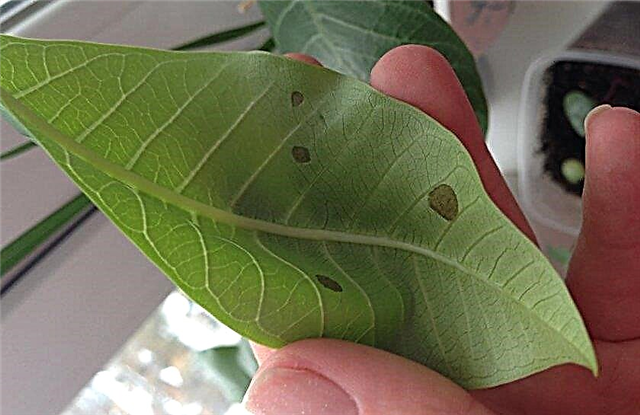
Of pests for plumeria is dangerous spider mite. It eats juices and can lead to the complete death of the plant. It settles in rooms where it is too dry and hot. As a result of its harmful activity, a cobweb appears on the flower, the leaves turn yellow, twist and fall.
If the infection is not strong, then you can expel the pest by abundant moisture - spray the flower well and cover it for several days with a plastic bag. Also, for wiping, wiping the leaves and shoots with a soap solution is used. With a massive invasion of parasites, they resort to chemical treatments. The insecticides Fitoverm, Bi-58, Karate, Iskra-M, Actellik are suitable.
With improper care, the decorativeness of the plant may suffer.
Most often, flower growers encounter such problems:Did you know? Plumeria flowers have one surprising property - they do not burn at temperatures below + 500 ° C.
- Leaves fall. A normal process is considered if leaf fall begins before winter. So the plant is preparing to go into a dormant period. If it discards leaves in another period, then it is worth being wary. This may mean that it has little or too much moisture. An urgent need to adjust the irrigation mode.
- Plumeria is not is growing. Stagnation in combination with yellowing of the leaves is due to moisture deficiency. It is necessary to increase the frequency and volume of humidification.
- For a long time, flowers do not appear. Most likely, the flower is dark, in the place where it grows. It is necessary to rearrange it to where it will be enough light.
- On the stalk and roots appeared rot. Rot develop under excessive watering and low temperatures. If rotting has just begun, then the affected roots can be removed, cut the slices with charcoal or activated carbon, transplant the plant into a new pot and soil. With severe decay, cuttings need to be cut and the flower updated. A diseased plant is not subject to resuscitation.

